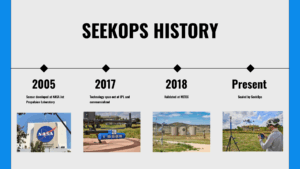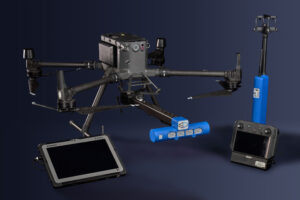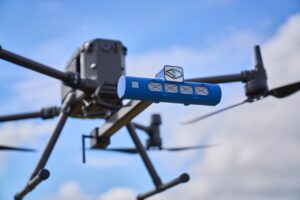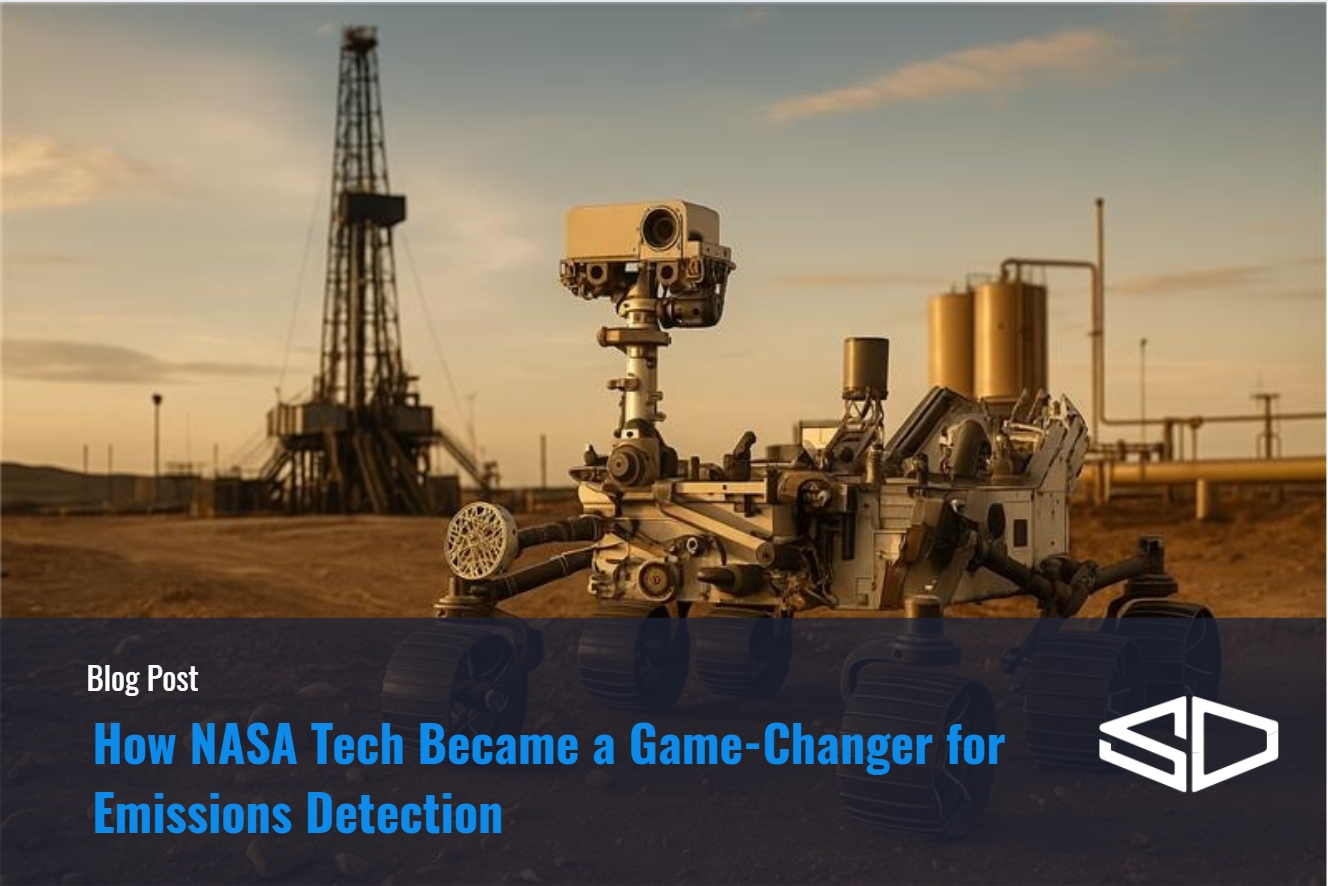Discover how SeekOps turned a Mars rover methane sensor into a powerful emissions monitoring tool—precision built for space, used to reduce climate change on Earth.
Read time: 5 minutes

A Journey That Began on Mars
At SeekOps, our technology has a rather extraordinary origin story. Long before it was detecting methane leaks at energy facilities, the core sensor behind our platform was developed to help search for life on Mars.
Yes, that Mars.
Our sensor was born at NASA’s Jet Propulsion Laboratory (JPL) as part of the Curiosity Rover mission. Scientists needed a tool sensitive enough to detect even the smallest traces of methane, a gas that on Mars could be a clue pointing toward microbial life. Because Mars has only tiny amounts of methane in its atmosphere, the instrument had to be extremely precise and accurate with the ability to pick up even the faintest signal.
What the JPL team didn’t foresee was how this breakthrough would later be used to tackle one of Earth’s most pressing climate challenges — methane emissions monitoring. That same core technology is now the foundation of SeekOps’ globally deployed sensor systems, helping industries detect and reduce greenhouse gases with unprecedented accuracy.
Transforming Space-Tech into Climate-Tech
After being successfully deployed on another planet, the methane detection technology was “spun out” of NASA in 2017 and adapted for use in our own atmosphere. That’s when SeekOps was born.
Our team saw enormous potential: methane is a powerful greenhouse gas, more than 80 times more potent than carbon dioxide over a 20-year period, resulting in a huge impact for the climate. It is responsible for about 30% of current global warming, according to the International Energy Agency. Because it dissipates faster than CO₂ in the atmosphere, cutting methane offers one of the fastest, most impactful ways to slow climate change in the near term.
Detecting and reducing emissions is a priority across the energy industry and beyond. Yet, until recently, many tools lacked the sensitivity or mobility to measure it effectively, especially in hard-to-reach places or dynamic environments such as oil and gas facilities, landfills, biogas plants, and more.
SeekOps set out to change that. Adapting the Martian sensor for terrestrial use required more than a simple repackaging. Earth’s atmosphere is denser, more humid, and far more variable than that of Mars, demanding significant engineering adaptations. The SeekOps team miniaturized the platform even further, integrated it with unmanned aerial systems (UAS), and reconfigured it for accurate measurements in industrial settings. They also developed fully autonomous workflows that allowed the sensor to be deployed at scale — from drones surveying oil and gas facilities to quantification and attribution workflows in the cloud.
The result is a compact yet powerful methane detection tool that blends space-grade precision with the practicality and flexibility required for global emissions monitoring.
Field-Tested. Field-Proven.
Bringing the sensor down to Earth wasn’t enough—we needed to prove it works in real-world conditions. That’s why we took it to the Methane Emissions Technology Evaluation Center (METEC) in Colorado.
Our sensor was one of the first methane detection platforms evaluated at METEC, a controlled test facility that simulates real-world emission scenarios. The sensor performed exceptionally well, with results showing high sensitivity and consistent quantification accuracy across a range of emission rates and environmental conditions. Our sensor outperformed the rest, detecting leaks without false positives or false negatives.
Independent evaluations, including those conducted by Stanford University and industry-leading operators, confirmed the technology’s reliability. Unlike many alternatives, SeekOps’ system not only detected emissions at very low levels but also provided accurate quantification, even in the presence of wind, obstructions, or multiple sources.
These capabilities have led to wide adoption by major energy companies, government programs, and climate accountability initiatives, reinforcing SeekOps’ position as a trusted partner in methane detection.
Real-World Impact Around the Globe
Since its commercialization, SeekOps has surveyed more than 2,000 facilities across over 35 countries and six continents, including over 100 offshore platforms. The technology has been deployed in a wide range of sectors: from upstream and midstream oil and gas operations to renewable natural gas projects, landfills, biogas digesters, and waste management sites.
Each deployment provides detailed, site-specific emissions data that customers use to make operational improvements, address leaks, and comply with stringent climate regulations. The results speak for themselves. Since 2021, SeekOps has enabled the measurement of over 1.1 million tonnes of methane annually, equivalent to about 31 million tonnes of carbon dioxide. These measurements support programs such as OGMP 2.0 and the EU Methane Regulation, as well as new frameworks such as GTI Veritas, OneFuture, or MiQ in the United States.
SeekOps doesn’t just provide detection — it enables action.
Why It Matters
Methane detection isn’t just about compliance. It’s about protecting our environment and improving operational safety. Every undetected leak is a lost resource and a missed opportunity to reduce climate impact. While it often escapes through small leaks or malfunctioning equipment, it has historically been difficult to detect and measure, especially at scale.
Because our sensor was designed to operate in one of the harshest environments imaginable—another planet—it’s incredibly reliable and sensitive. That means SeekOps can detect and quantify even low-level emissions in complex, real-world conditions.
By turning invisible emissions into actionable insights, operators can now locate even small leaks, prioritize repairs, and demonstrate measurable reductions. This capability is no longer a “nice-to-have,” but a core requirement for companies that are serious about reducing their carbon footprint and meeting regulatory or ESG expectations.


From Red Planet to Blue Planet
Today, what started as a mission to find life on Mars is helping us preserve life here on Earth.
SeekOps is proud to carry that legacy forward by combining scientific rigor, cutting-edge technology, and environmental stewardship to support industries in their efforts to reduce emissions and build a more sustainable future. Our company is expanding its sensor platform to detect other greenhouse gases like carbon dioxide. It is also developing AI-powered analytics to automate emissions source attribution and support predictive maintenance. All of this aims at making emissions data even more useful, and actionable, for customers.
As the world continues to embrace transparency, accountability, and decarbonization, SeekOps is committed to providing the tools that enable real change. Whether you’re new to emissions monitoring or an industry veteran, we’re excited to share how our tools work and why they matter.
Stay tuned for the next post in our series: “The Science of Precision – How the SeekIR® Sensor Works.”
Curious how space-age tech can improve sustainability on Earth?
Request a Demo or Explore Our Technology to see how SeekOps is transforming emissions monitoring around the world.
References
Webster, C. R. (2005). Measuring methane and its isotopes 12CH₄, 13CH₄, and CH₃D on the surface of Mars within situ laser spectroscopy. Applied Optics, 44(7), 1226–1235. https://doi.org/10.1364/AO.44.001226
NASA Spinoff (2019). Methane Detector Sniffs Out Leaks. NASA Technology Transfer Program. https://spinoff.nasa.gov/Spinoff2019/ps_7.html
Ravikumar, A. P., Wang, J., Sreedhara, S., et al. (2019). Single-blind inter-comparison of methane detection technologies: Results from the Stanford/EDF Mobile Monitoring Challenge. Elementa: Science of the Anthropocene, 7(1), 37. https://doi.org/10.1525/elementa.373
Hossian, R. I., et al. (2024). A Controlled Release Experiment for Investigating Methane Measurement Performance at Landfills. Environmental Research and Education Foundation (EREF). https://erefdn.org/eref-funded-study-highlights-advances-in-measuring-landfill-methane-emissions
Corbett, A., & Smith, B. (2022). Study of a Miniature TDLAS System Onboard Two Unmanned Aircraft to Independently Quantify Methane Emissions from Oil and Gas Production Assets and Other Industrial Emitters. Atmosphere, 13(5), 804. https://doi.org/10.3390/atmos13050804


